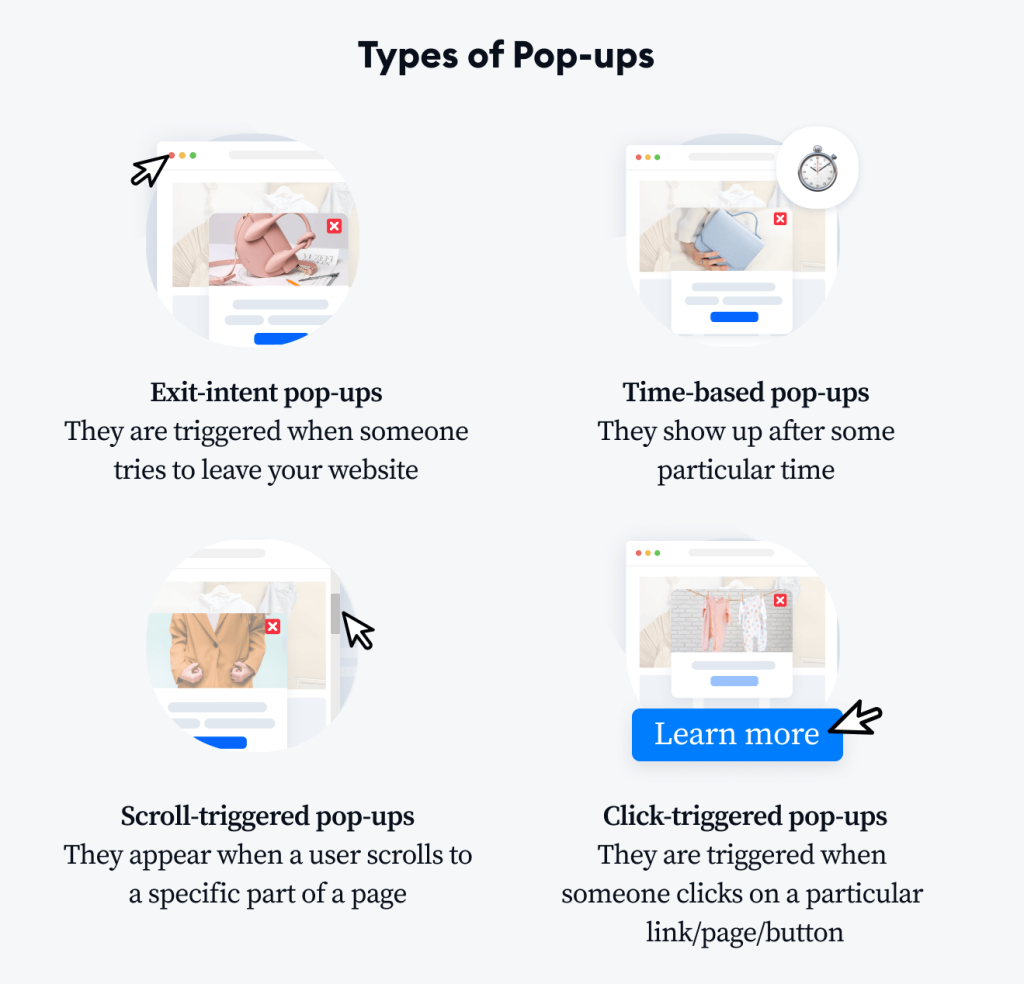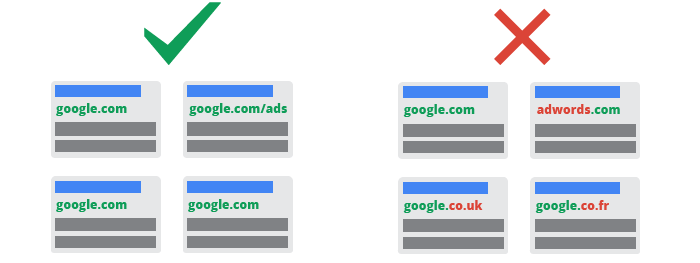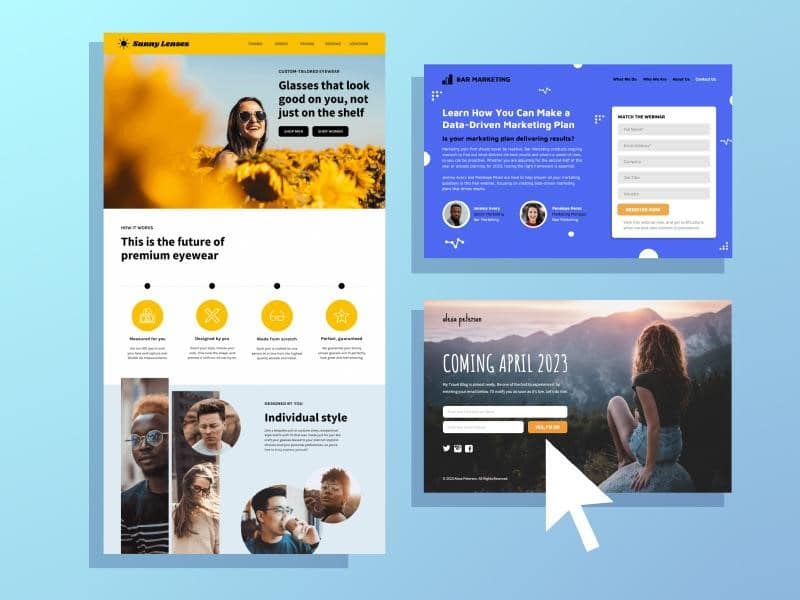In today's digital marketing landscape, destination ads have become a cornerstone strategy for businesses seeking to drive qualified traffic to their websites. What is a destination ad? Simply put, destination ads are digital advertisements specifically designed to direct users to a landing page or website when clicked, with the primary goal of generating website traffic and conversions. Unlike other ad formats that may prioritize on-platform engagement, destination ads focus exclusively on moving users from the advertising platform to your digital property.
The importance of destination ads cannot be overstated in modern marketing strategies. As competition for consumer attention intensifies across digital channels, these ads serve as critical funnels for qualified traffic acquisition. According to recent data from eMarketer, advertisers spent over $400 billion on digital ads in 2023, with destination-focused campaigns accounting for approximately 65% of total digital ad spend.
Major platforms including Facebook/Meta, Google Ads, and LinkedIn offer robust destination ad capabilities, each with unique features tailored to their specific audiences and user behaviors. The Facebook destination ad ecosystem, for instance, has evolved significantly since its inception, moving from simple website click ads to sophisticated conversion-optimized campaigns with advanced targeting options.
Industry benchmarks indicate that well-optimized destination ad campaigns consistently deliver strong performance metrics. The average click-through rate for destination ads across industries hovers around 0.90%, with top-performing campaigns achieving rates of 3-5% or higher. When properly aligned with high-converting landing pages, these campaigns can deliver cost-per-acquisition rates 30-40% lower than other digital marketing channels.
In this comprehensive guide, we'll explore everything you need to know about destination ads—from fundamental concepts to advanced optimization strategies across major platforms. By the end, you'll have the expertise to create, implement, and optimize destination ad campaigns that drive meaningful business results.
What is a Destination Ad? Core Concepts and Fundamentals

A destination ad is a digital advertisement specifically designed to drive users from an advertising platform to an external website or landing page. The destination URL in advertising represents the web address where users land after clicking your ad. Unlike in-platform formats like lead form ads or engagement ads, destination ads prioritize website traffic and off-platform conversions.
The Anatomy of an Effective Destination Ad

Every high-performing destination ad contains several key components:
- Compelling headline/copy: Concise, benefit-focused text that creates urgency
- Engaging visuals: Images or videos that capture attention and illustrate value
- Clear call-to-action: Direct instruction telling users what to do next
- Destination URL: The optimized landing page where users will be directed
- Ad format: Platform-specific format (carousel, single image, video, etc.)
- Value proposition: Clear articulation of what the user gains by clicking
The primary business objectives aligned with destination advertising typically include:
- Driving qualified website traffic
- Generating leads or sales on your website
- Building remarketing audiences for future targeting
- Creating brand awareness with measurement capabilities
The user journey in advertising with destination ads typically follows a path of awareness → consideration → click → landing page interaction → conversion. This journey makes the destination ad the critical gateway between user interest and business results.
When measuring destination ad performance, marketers focus on several key metrics:
- Click-through rate (CTR)
- Cost per click (CPC)
- Landing page conversion rate
- Cost per acquisition (CPA)
- Return on ad spend (ROAS)
- Bounce rate
- Time on site
Destination ads differ fundamentally from other ad formats. Unlike lead form ads that collect information directly within the platform, or engagement ads focused on likes and comments, destination ads prioritize the off-platform journey and conversions on your owned digital properties.
Platform-Specific Destination Ad Strategies
Facebook Destination Ads
Facebook destination ads offer exceptional versatility across multiple ad formats, including single image, carousel, video, and collection ads. This platform excels at detailed audience targeting through demographics, interests, behaviors, and custom audiences.
When setting up Facebook destination ads:
- Choose "Traffic" or "Conversions" as your campaign objective
- Select "Website" as your destination
- Define your audience with precise targeting parameters
- Select your placements (automatic or manual)
- Set your budget and bidding strategy
- Create compelling ad creative and copy
- Enter your optimized destination URL
Best practices for Facebook destination ad implementation include:
- Using the Facebook pixel for proper conversion tracking
- Implementing value-based bidding for higher-quality traffic
- Creating separate ad sets for different audience segments
- Optimizing creative elements for mobile experience
- Testing multiple headlines and descriptions
- Implementing retargeting campaigns for users who visited but didn't convert
Recent Facebook updates include enhanced Advantage+ campaign options, improved creative optimization tools, and expanded conversion API capabilities.
Meta Destination Ads (Instagram, Messenger, etc.)
Meta's expanded ecosystem allows for cross-platform destination ad campaigns spanning Instagram, Messenger, and more. When implementing Meta destination ads:
- Customize creative assets for each platform (Instagram's visual nature versus Facebook's more information-rich environment)
- Leverage platform-specific features like Instagram Shopping tags
- Adjust messaging to match platform-specific user expectations
- Monitor performance differences across properties to optimize budget allocation
Performance metrics often vary between Meta properties, with Instagram typically showing higher engagement rates but sometimes higher costs-per-click than Facebook.
Google Ads Destination Campaigns

Google Ads offers distinct destination ad options across Search, Display, and YouTube networks:
Search Network:
- Focus on high-intent keyword targeting
- Create compelling text ads with relevant headlines
- Optimize quality score through landing page relevance
- Implement automated bidding strategies like Target CPA or ROAS
Display Network:
- Use visual creative formats optimized for awareness
- Implement audience targeting layered with contextual placements
- Focus on remarketing strategies for higher conversion rates
YouTube:

- Create skippable and non-skippable video ads directing to your site
- Implement clear calls-to-action within video content
- Utilize YouTube-specific destination URL parameters for tracking
Google-specific destination URL parameters like gclid enable comprehensive tracking and attribution across the customer journey.
Destination Ad Setup: Technical Implementation Guide
Proper destination ad setup requires careful technical implementation across platforms. Here's a universal process that can be adapted to specific platforms:
- Define conversion goals - Identify exactly what action you want users to take after clicking
- Set up tracking - Implement platform pixels (Facebook Pixel, Google Tag, etc.)
- Structure destination URLs - Create properly formatted URLs with tracking parameters
- Build audience segments - Develop targeting parameters based on your ideal customer
- Create campaign structure - Organize campaigns, ad sets, and ads logically
- Develop creative assets - Design ad creative and copy aligned with landing pages
- Set budgets and bidding - Establish financial parameters and bidding strategies
- Implement testing framework - Create variation elements for ongoing optimization
UTM parameters are essential for destination ad tracking and should include:
- utm_source (identifying the platform)
- utm_medium (identifying the marketing medium)
- utm_campaign (identifying the specific campaign)
- utm_content (identifying the specific ad)
- utm_term (identifying keywords if applicable)
For example: `www.yoursite.com/landing-page?utm_source=facebook&utm_medium=cpc&utm_campaign=summer_sale&utm_content=carousel_ad_1`
Mobile optimization is critical as most destination ad clicks come from mobile devices. Ensure your landing pages:
- Load in under 3 seconds
- Feature responsive design
- Have easily tappable buttons (minimum 44x44 pixels)
- Place critical content above the fold
- Minimize form fields for mobile users
A successful destination ad example from the SaaS industry demonstrated these principles with a carousel ad featuring product benefits, each card having a clear CTA leading to a dedicated landing page with message match, resulting in a 4.2% CTR and 18% conversion rate.
Landing Page vs. Destination URL: Critical Distinctions and Strategies

The destination URL in advertising and the landing page it points to are related but distinct concepts. The destination URL is the complete web address users are directed to after clicking your ad, including all tracking parameters. The landing page is the actual webpage content users see upon arrival.
For example:
- Landing page: `www.yoursite.com/special-offer`
- Destination URL: `www.yoursite.com/special-offer?utm_source=facebook&utm_medium=cpc&utm_campaign=spring_promo`
Effective destination ad strategies require tight alignment between ad messaging and landing page content, often called "message match." When a user clicks on an ad promising a specific benefit or offer, the landing page should immediately deliver on that promise.
Best practices for landing pages receiving destination ad traffic include:
- Maintain visual consistency - Use similar colors, images, and design elements
- Echo headline promises - Repeat key benefit statements from the ad
- Streamline the conversion path - Remove navigation and distractions
- Focus on a single call-to-action - Align with the ad's intended conversion goal
- Optimize load speed - Ensure quick rendering, especially on mobile
- Implement trust signals - Include testimonials, security badges, and social proof
A retail case study demonstrated the importance of this alignment: after restructuring landing pages to directly match ad messaging, conversion rates increased by 38%, while bounce rates decreased by 27%.
Conversion Tracking with Destination Ads
Comprehensive conversion tracking is essential for measuring destination ad performance. Implementation varies by platform but follows similar principles:
Facebook/Meta:
- Install the Facebook pixel on your website
- Define standard events (Purchase, Lead, etc.) or custom conversions
- Enable conversion API for server-side tracking
- Set up value tracking for revenue-based optimization
- Configure attribution settings (7-day click, 1-day view, etc.)
Google Ads:
- Set up conversion tracking via Google Tag Manager
- Define conversion actions aligned with business goals
- Implement enhanced conversions for improved measurement
- Configure conversion values for ROAS bidding
- Set appropriate attribution models
Advanced attribution models help understand the full impact of destination ads, including:
- First-click attribution
- Last-click attribution
- Linear attribution
- Time-decay attribution
- Position-based attribution
- Data-driven attribution
Privacy considerations have become increasingly important with the decline of third-party cookies. Destination ad marketers should:
- Implement server-side tracking where possible
- Leverage first-party data collection
- Use enhanced conversions and conversion API
- Implement proper consent management
- Explore privacy-preserving attribution solutions
Custom conversion events can provide deeper insights into user behavior. Beyond standard purchase or lead events, consider tracking:
- Add to cart actions
- Product/content views
- Email signups
- Account creations
- Content downloads
- Time on site thresholds
Optimizing for Conversions: Beyond Traffic Generation
While destination ads initially focus on driving traffic, optimizing for conversions requires a more sophisticated approach. To transition from traffic-focused to conversion-focused campaigns:
- Gather baseline data - Collect sufficient traffic data before optimizing for conversions
- Implement full-funnel tracking - Track actions throughout the conversion path
- Segment audiences by value - Identify and prioritize high-value customer segments
- Optimize bidding strategies - Transition from clicks to conversion-based bidding
- Refine creative based on conversion data - Iterate creative elements that drive not just clicks but conversions
Audience segmentation is essential for higher conversion rates. Consider segmenting by:
- Previous website behavior
- Purchase intent signals
- Product category interests
- Customer lifetime value potential
- Geographic considerations
Retargeting strategies for users who visited through destination ads typically yield 3-5x higher conversion rates than prospecting campaigns. Implement retargeting with:
- Dynamic product ads showing previously viewed items
- Abandoned cart recovery campaigns
- Limited-time offers to create urgency
- Social proof messaging to build confidence
- Sequential messaging that addresses objections
Landing page optimization techniques to improve post-click conversion rates include:
- A/B testing headline variations
- Experimenting with form length and fields
- Testing different call-to-action placements and wording
- Optimizing page load speed
- Implementing exit-intent offers
The most successful advertisers maintain a consistent testing methodology, with typical frameworks including:
- Control vs. challenger testing
- Multivariate testing for complex pages
- Iterative improvements based on heatmap data
- User testing to identify friction points
Ad Objective Selection: Choosing the Right Goal for Destination Campaigns
Selecting the appropriate campaign objective is foundational to destination ad success. Major platforms offer various objectives that impact ad delivery, optimization, and measurement.
When to choose Traffic objectives:
- Early campaign stages when gathering baseline data
- Brand awareness campaigns requiring website engagement
- Content marketing initiatives focused on readership
- Limited conversion data available for optimization
When to choose Conversion objectives:
- Established campaigns with sufficient conversion data
- Clear ROI targets and conversion values
- Strong historical performance data for machine learning optimization
- Direct response campaigns with specific action goals
When to choose Consideration objectives:
- Complex sales requiring multiple touchpoints
- High-value products with longer decision cycles
- Building remarketing pools for future targeting
- Educational marketing requiring deeper engagement
Objective selection directly impacts ad delivery optimization. Traffic objectives optimize for users most likely to click, while conversion objectives prioritize users most likely to complete specific actions post-click.
Multi-objective strategies can provide comprehensive funnel coverage. For example:
- Awareness campaigns with reach objectives to build initial audience
- Traffic campaigns to drive website engagement
- Conversion campaigns targeting high-intent segments
- Retargeting campaigns to close sales
A B2B software company successfully implemented this approach by starting with traffic campaigns to drive whitepaper downloads, then transitioning to conversion campaigns for demo requests, resulting in a 42% increase in qualified leads and 23% reduction in cost per acquisition.
High-Converting Destination Ad Creation: Creative Best Practices
The creative elements of your destination ads significantly impact their performance. Compelling copywriting techniques include:
- Leading with specific, quantifiable benefits
- Creating urgency through limited-time offers
- Addressing pain points directly
- Using questions to engage curiosity
- Implementing social proof statements
- Maintaining brevity and clarity
Visual design principles for high-CTR destination ads include:
- Using high-contrast colors for CTAs
- Implementing the rule of thirds for image composition
- Featuring people looking toward ad copy
- Ensuring text overlay readability
- Maintaining brand consistency
- Using animation or video for increased attention
Call-to-action optimization is critical for maximizing click-through rates:
- Use action verbs (Get, Download, Learn, etc.)
- Create clarity about what happens after the click
- Test button colors and placements
- Experiment with first-person phrasing ("Get My Free Guide" vs. "Get Your Free Guide")
- Add subtle directional cues toward the CTA
A retail destination ad example demonstrated these principles with:
- Clear product benefit in the headline
- High-quality product image with lifestyle context
- "Shop Now" CTA with price point
- Social proof ("5,000+ 5-star reviews")
- Urgency element ("Limited quantities available")
This combination led to a 3.8% CTR and 22% conversion rate from landing page to purchase.
Measuring and Analyzing Destination Ad Performance
Comprehensive measurement of destination ad performance requires tracking multiple KPIs:
Traffic metrics:
- Click-through rate (CTR)
- Cost per click (CPC)
- Traffic volume
- Ad frequency
- Relevance score/Quality Score
Post-click metrics:
- Bounce rate
- Time on site
- Pages per session
- Conversion rate
- Average order value
- Cost per acquisition
Click-through rate optimization strategies include:
- Testing multiple headline variations
- Experimenting with different visual elements
- Segmenting audiences more granularly
- Implementing dayparting for optimal timing
- Refreshing creative to combat ad fatigue
Advanced analytics techniques for destination campaigns include:
- Path analysis to understand user journeys
- Cohort analysis to measure long-term value
- Attribution modeling to credit touchpoints appropriately
- Predictive analytics to forecast performance
- Incrementality testing to measure true campaign impact
Cost efficiency metrics help optimize ROAS:
- Cost per thousand impressions (CPM)
- Cost per click (CPC)
- Cost per action (CPA)
- Return on ad spend (ROAS)
- Customer acquisition cost (CAC)
- Customer lifetime value (CLV)
Creating comprehensive performance dashboards helps maintain a holistic view of destination ad performance, integrating platform data with website analytics and CRM systems for complete journey analysis.
Destination Ads vs. Lead Form Ads: When to Use Each

While destination ads direct users to external websites, lead form ads collect information directly within the advertising platform. Each format has distinct advantages:
Destination ads are optimal when:
- Website experience is critical to conversion
- Multiple conversion paths exist
- You need to build remarketing audiences
- Content or product details require extended explanation
- Post-click engagement metrics matter
- You have strong landing pages optimized for conversion
Lead form ads work better when:
- Simplicity and convenience are priorities
- Mobile users are the primary audience
- Form completion is the only desired action
- Speed of conversion matters more than depth of engagement
- You want to minimize friction in the conversion process
Best practices for destination ads include ensuring strong message match between ads and landing pages, implementing comprehensive tracking, testing multiple creative variations, optimizing for mobile experience, and developing a strategic retargeting approach to capture users who don't convert immediately.
Final word
By understanding the fundamental principles of destination ads and implementing the strategies outlined in this guide, marketers can significantly improve their traffic acquisition and conversion performance across major advertising platforms. Whether you're using Facebook destination ads, Google Ads campaigns, or Meta's expanded ecosystem, these techniques will help you maximize ROI and drive meaningful business results through destination advertising.





